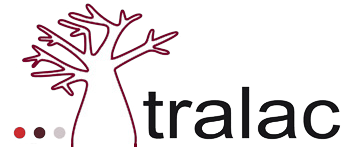Discussions
Trade Policy Review of the East African Community
Willemien Viljoen, tralac Researcher, discusses the Trade Policy Review of the East African Community
The second joint Trade Policy Review of the East African Community (EAC) countries (Burundi, Kenya, Rwanda, Tanzania and Uganda) took place from 21 to 23 November 2012 in Geneva, Switzerland. The previous Trade Policy Review of the EAC was in 2006. The basis for the review was a report by the WTO Secretariat along with Annexes containing the Government reports of the five member countries (the full report is available here).
According to the WTO Secretariat Report intra-EAC trade has increased by 16 percent over the last five years, from 1.8 US$ million in 2005 to 3.8 US$ million in 2010. However, intra-EAC trade are still hampered by the high cost of doing business in the region due to poor physical infrastructure and the high cost of energy. In terms of EAC trade with the rest of the world, the EAC countries are primarily importers of goods from the EU, US and other African countries.
The following important aspects regarding the trade and investment regimes, trade policy measures and sectoral trade policies in the EAC are highlighted in the WTO Secretariat Report:
-
The EAC Common External Tariff (CET) has been fully operational for Kenya, Tanzania and Uganda since 2005. Burundi and Rwanda started the implementation of the CET in January 2009 although the inclusion of these two countries into the EAC has not yet been notified to the WTO. This is mainly due to the overlapping membership of the EAC countries to various regional arrangements which also poses a challenge for the EAC due to different rules of origin requirements.
-
Non-tariff barriers (NTBs) in the region are a major concern for trade and business development, including non-harmonised technical standards, sanitary and phytosanitary requirements, customs procedures and documentation, different rules of origin regimes and road blocks. In order to address these NTBs National Monitoring Committees (NMCs) have been established in all the EAC members who report quarterly to the EAC Sectoral Committee on Trade, Industry and Investment which is responsible for resolving outstanding NTBs.
-
There are a wide variety of trade policy measures which affects imports, exports and production. These include non-standardised customs documentation and procedures, high tariffs on sensitive products, required export authorisation for specific goods and the EAC Competition Act. The table below provides an overview of the trade policy measures identified in the report.
| Measures affecting imports | Measures affecting exports | Measures affecting trade and production |
|
|
|
-
Although the contribution of agriculture to the EAC economies have declined over the last five years it is still an important sector for the region due to 80 percent of the EAC population living in rural areas and depending on agriculture for their livelihoods. The major food crops produced in the region including maize, rice, potatoes, bananas, cassava, wheat and sorghum. Cash crops produced mainly for export include tea, cotton, coffee, sugar, tobacco and coconut. Agricultural production is hampered by the lack of appropriate technologies, high input costs, drought, pests and diseases and market instabilities. In order to address these and other shortcomings and to promote food security in the region three main regional initiatives have been implemented. These are the Agriculture and Rural Development Policy, Agriculture and Rural Development Strategy and the EAC Food Security Action Plan.
-
The services sector (along with manufacturing) has become increasingly important over the last five years. The EAC Common Market Protocol (CMP) provides for the free movement of services in the region. The Schedule of Specific Commitments follows the positive list approach under the GATS with the first round of service liberalisation focused on seven core services sectors. These are communication, business, distribution, education, financial, tourism and travel-related and transport. According to the EAC Secretariat the negotiations on the liberalisation of the remaining services sectors and sub-sectors are ongoing.
-
Aid for Trade (AfT) plays an important part in the region to address fundamental and structural shortcomings. In 2010 AfT represented 44 percent, 51 percent, 20 percent, 46 percent and 40 percent of the total sector allocable official development assistance (ODA) respectively for Burundi, Kenya, Rwanda, Tanzania and Uganda. AfT has mainly been provided to support the regional integration process through regional programmes. Country-specific AfT which have benefitted the EAC members include the following: aid for (a) infrastructure, agriculture and the environment in Burundi; capacity building for customs administration, regional integration and enhanced veterinary capacity in Kenya; economic infrastructure and productive capacity building in Rwanda; transport and storage and business and other services in Tanzania; and transport and storage, energy and agriculture in Uganda.
-
The EAC countries are also benefitting from the North-South Corridor Initiative which is a regional capacity-building project aimed at reducing the time and cost of road and rail transport along two corridors: the Dar es Salaam Corridor which links Dar es Salaam with the copper belt and the North-South Corridor linking the copper belt to the southern ports of South Africa.
In the concluding remarks of the Chairperson of the Trade Policy Review Body some areas where there is the need for further action or improvements in the EAC were highlighted. These include tariff protection and conformity with the WTO provisions, addressing overlapping membership to regional trade agreements, removing distortions hampering production and trade in the agricultural sector, aligning Intellectual Property Right regimes with international norms and identifying services liberalisation and investment incentives in the services sector.
Source:
WTO Secretariat Report of the Trade Policy Review. Available at: http://www.tralac.org/images/Resources/EAC/WTO%20Trade%20Policy%20Review%20EAC%202012%20Secretariat%20Report.pdf

